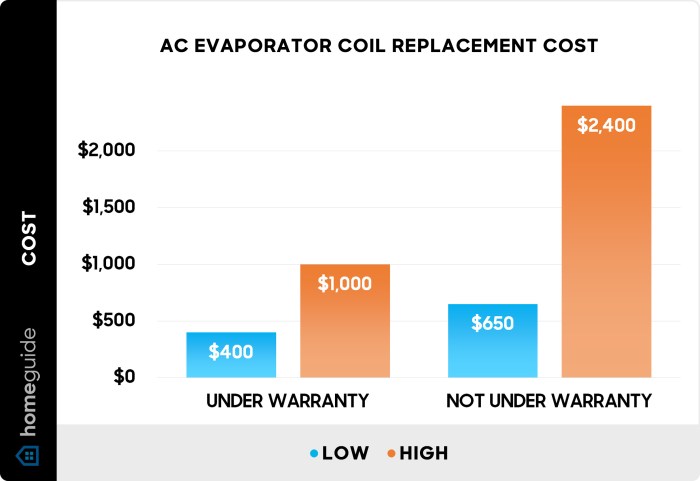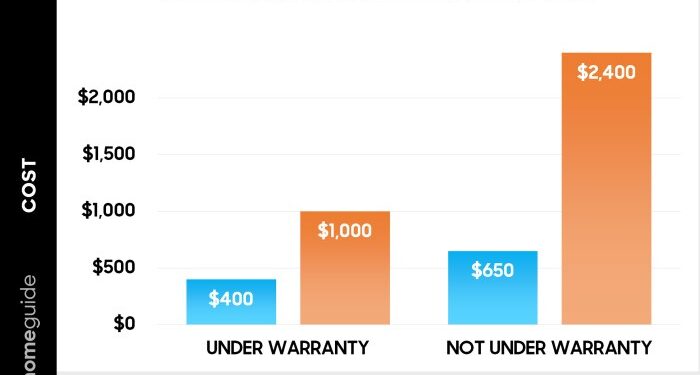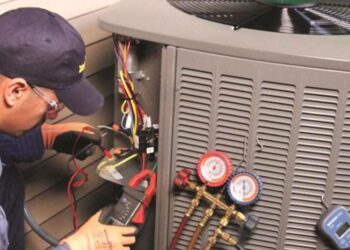Exploring the projected costs of replacing air conditioners in 2025, this introduction sets the stage for a detailed analysis of various influencing factors, types of systems, labor costs, and warranties. The discussion aims to provide valuable insights for consumers facing this decision in the near future.
As we delve deeper into the intricacies of air conditioner replacement costs, readers will gain a comprehensive understanding of what to expect in terms of expenses and considerations.
Factors Influencing the Cost
When considering the average cost of air conditioner replacement in 2025, several key factors come into play that can significantly impact the overall price. Advancements in technology, environmental regulations, and geographical location all play a crucial role in determining the final cost for consumers.
Advancements in Technology
With rapid advancements in technology, newer air conditioning systems are becoming more energy-efficient and environmentally friendly. While these advanced systems may come at a higher initial cost, they can lead to long-term savings on energy bills. Additionally, the installation and maintenance of these advanced systems may require specialized skills and equipment, which can also influence the overall cost of replacement.
Environmental Regulations
Environmental regulations aimed at reducing greenhouse gas emissions and promoting energy efficiency can impact the cost of air conditioner replacement. Manufacturers may need to invest in new technologies to comply with these regulations, which can result in higher production costs.
These costs are often passed on to consumers in the form of higher prices for air conditioning units.
Geographical Location
The cost of air conditioner replacement can vary significantly based on geographical location. Factors such as climate, local demand, and the availability of skilled technicians can all influence pricing. For example, areas with extreme climates may require more powerful and specialized air conditioning systems, leading to higher replacement costs.
Additionally, regions with a higher cost of living may have higher labor costs, further impacting the overall price of replacement.
Types of Air Conditioner Systems
Air conditioner systems come in various types, each offering different features, efficiency levels, and costs. In 2025, homeowners have a range of options to choose from based on their needs and budget. Let's explore the different types of air conditioner systems available and compare their costs.
Traditional HVAC Systems
Traditional HVAC systems consist of a central air conditioner unit connected to ductwork throughout the house. These systems are commonly used in many homes and provide both cooling and heating functions. While they are reliable, the initial installation cost can be significant, ranging from $5,000 to $10,000.
Maintenance costs for traditional HVAC systems are also relatively high due to the complexity of the system.
Newer Energy-Efficient Models
Newer energy-efficient air conditioner models, such as ductless mini-split systems or geothermal heat pumps, are gaining popularity in 2025. These systems are designed to reduce energy consumption and lower utility bills. While the initial investment for energy-efficient models can be higher compared to traditional systems, ranging from $3,000 to $15,000 depending on the type and size of the unit, homeowners can expect substantial long-term savings on their energy bills.
Maintenance costs for energy-efficient models are generally lower as they are designed to operate more efficiently.
| System Type | Initial Investment | Long-Term Savings |
|---|---|---|
| Traditional HVAC Systems | $5,000
| Higher maintenance costs |
| Newer Energy-Efficient Models | $3,000
| Lower energy bills over time |
Labor Costs and Installation Process

When it comes to replacing an air conditioner unit, labor costs play a significant role in determining the overall price. Understanding the labor costs and installation process can give you a better idea of what to expect when budgeting for this home improvement project.
Labor Costs Breakdown
- Labor costs typically include the wages of the technicians performing the installation.
- Factors such as the complexity of the installation, the size of the unit, and the location of the installation can all impact labor costs.
- On average, labor costs can range from $500 to $2000, depending on the above-mentioned factors.
Installation Process Overview
- The first step in the installation process is removing the old air conditioner unit, which involves disconnecting electrical connections and refrigerant lines.
- Next, the new unit is positioned and secured in place, followed by connecting electrical wiring and refrigerant lines.
- Once the unit is installed, technicians will test the system to ensure it is functioning correctly and efficiently.
Impact of Installation Complexity
- If the installation requires additional work such as ductwork modifications or electrical upgrades, the overall cost will increase.
- Complex installations, such as those involving multi-zone systems or smart thermostats, may also require more labor and therefore drive up costs.
Additional Services
- Some installation packages may include services such as debris removal, system tune-ups, or extended warranties.
- Technicians may also offer maintenance plans or post-installation inspections for an additional fee.
Warranty and Service Agreements
When considering the cost of air conditioner replacement, warranty and service agreements play a crucial role in determining the overall price and long-term maintenance expenses. Understanding the different warranty options and service agreements can help homeowners make informed decisions when investing in a new air conditioning system.
Importance of Warranty
- Warranty coverage can vary between manufacturers and typically includes parts and labor for a specified period.
- Having a comprehensive warranty can provide peace of mind and protect homeowners from unexpected repair costs.
- Extended warranties may be available for purchase, offering additional coverage beyond the standard warranty period.
Impact on Price
- Opting for a longer warranty period or extended coverage can increase the initial cost of the air conditioner replacement.
- However, a more extensive warranty can result in savings over time by reducing out-of-pocket expenses for repairs and maintenance.
- Comparing warranty options and considering the reliability of the manufacturer can help homeowners choose the best value for their investment.
Benefits of Service Agreements
- Service agreements often include regular maintenance visits to ensure the air conditioning system operates efficiently.
- Scheduled maintenance can prolong the lifespan of the unit, improve energy efficiency, and prevent costly breakdowns.
- Service agreements may also offer discounts on repairs and priority scheduling for service calls, enhancing the overall value for homeowners.
Common Terms and Conditions
- Be aware of any exclusions or limitations in the warranty, such as improper installation or neglecting routine maintenance.
- Understand the process for filing warranty claims and the procedures for receiving service under the warranty.
- Some warranties may require registration within a specific timeframe to be valid, so homeowners should carefully follow the manufacturer's guidelines.
Ending Remarks
In conclusion, understanding the average cost of air conditioner replacement in 2025 involves a multifaceted examination of factors that can impact pricing. By being informed about these aspects, individuals can make informed decisions when the time comes to replace their cooling systems.
Questions Often Asked
What are the key factors influencing the cost of air conditioner replacement?
The key factors include technological advancements, environmental regulations, and geographical location.
What types of air conditioner systems are available in 2025?
In 2025, there are traditional HVAC systems as well as newer energy-efficient models.
How do labor costs contribute to the overall price of air conditioner replacement?
Labor costs are a significant component of the total price, depending on the complexity of the installation process.
Why is warranty important in the context of air conditioner replacement costs?
Warranty plays a crucial role in determining long-term costs and protecting consumers from unforeseen expenses.


![How To Avoid Contractor Scams [Infographic]](https://ac.radartasik.id/wp-content/uploads/2025/10/how-to-avoid-contractor-scams-feat-75x75.png)



![How To Avoid Contractor Scams [Infographic]](https://ac.radartasik.id/wp-content/uploads/2025/10/how-to-avoid-contractor-scams-feat-120x86.png)






